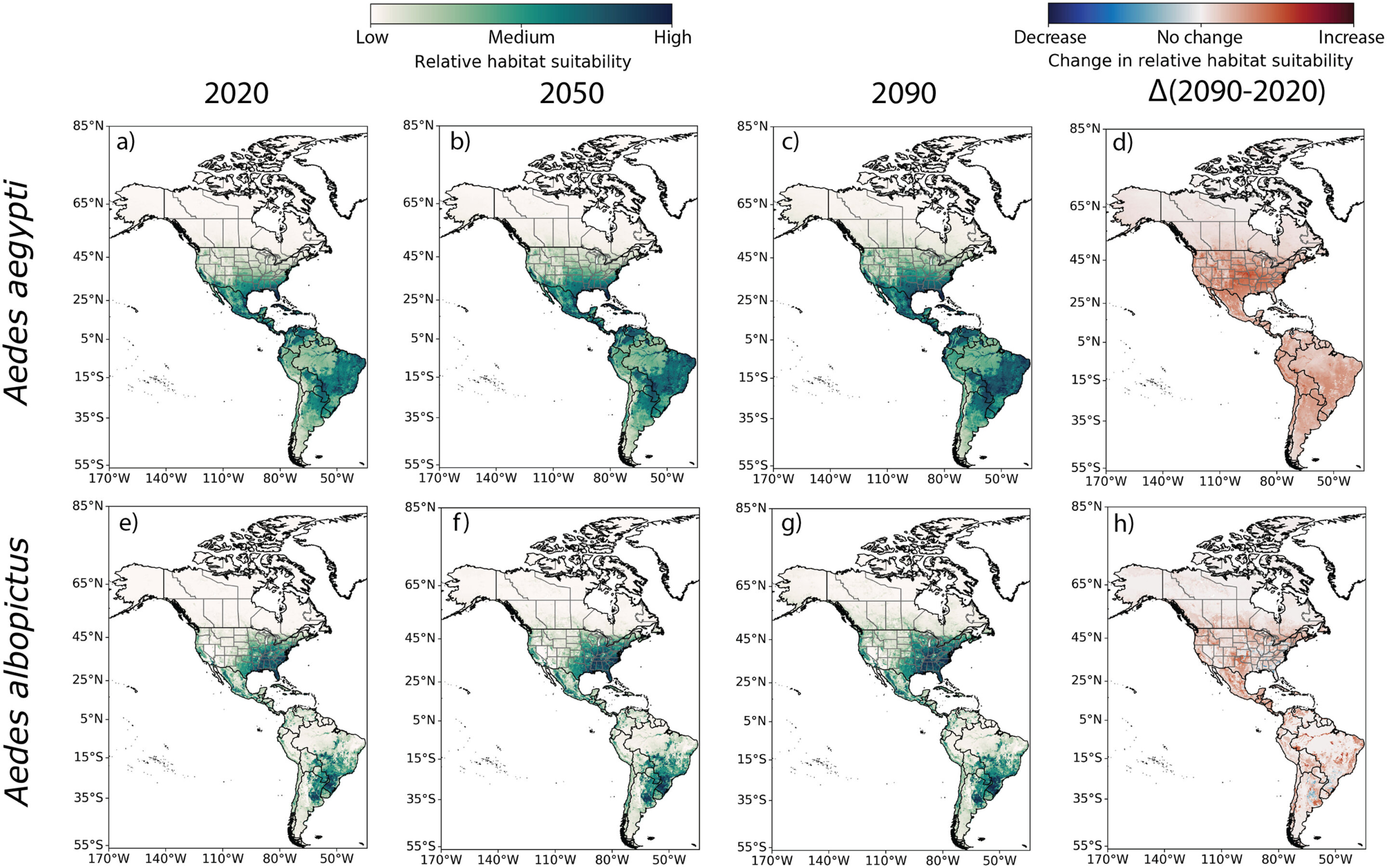A research team at Los Alamos National Laboratory is using computer models to simulate how climate change could expand the geographical range in which mosquitoes live, which may cause an increase in mosquito-borne illness. The study was recently published in the Journal of Climate Change and Health.
“We found that all nine species in our model responded resiliently to climate change, which tells us that mosquito-borne disease will be a continued threat as the climate warms,” said Morgan Gorris, a scientist in Los Alamos’ Information Systems and Modeling group and lead author of the study. “Understanding how mosquito populations grow and move in response to climate change is crucial to inform public health planning.”
Future climate change may expand, contract, or shift the geographical ranges of mosquito species. For example, warmer temperatures may cause ranges to expand or shift toward the poles, while areas around the equator may become too hot for mosquitoes to live. These shifts could expose new communities to mosquito-borne disease.
Global land-surface temperatures have already risen by roughly 2 degrees Fahrenheit from pre-industrial levels (1850-1900). By the end of the 21st century, global temperatures are expected to rise by nearly 5 degrees Fahrenheit.
Of the nine mosquito species Gorris and the team modeled, six are projected to expand in geographical range, two are projected to shift in geographical range, and one is projected to remain nearly the same. For some species, the areas currently suitable for survival are projected to become even more suitable in the future, worsening the mosquito problem.
Mosquitoes are the deadliest animal on the planet because of their ability to spread myriad diseases, including chikungunya, dengue, West Nile virus, yellow fever, and Zika virus—all of which are spread by the mosquitoes in this study.
“Knowing where mosquitoes will live in the future is important for understanding who is at risk for these diseases and taking the appropriate actions to protect health security,” Gorris said.
More information:
Morgan E. Gorris et al, Projections of Aedes and Culex mosquitoes across North and South America in response to climate change, The Journal of Climate Change and Health (2024). DOI: 10.1016/j.joclim.2024.100317
Citation:
Global warming may boost mosquito habitats, study finds (2024, May 8)
retrieved 8 May 2024
from https://phys.org/news/2024-05-global-boost-mosquito-habitats.html
This document is subject to copyright. Apart from any fair dealing for the purpose of private study or research, no
part may be reproduced without the written permission. The content is provided for information purposes only.

